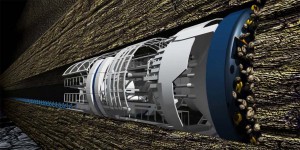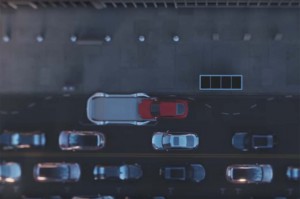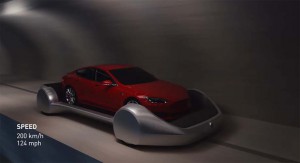Few people would ever accuse Elon Musk of being boring. He is, after all, the founder of both Tesla and SpaceX, two companies determined to change the way we travel, both on the ground and in the air.
But Musk is apparently determined to be boring – or, more accurately, he is intent on getting into the boring business, his latest venture aimed at digging tunnels under Los Angeles and, perhaps, other cities where surface-level roads are so clogged that traffic often grinds to a halt.
What started out as a seeming joke is apparently no laughing matter for the South African-born entrepreneur. During a TED Talk last Friday, Musk outlined his plan to build a network of tunnels under L.A., some of them permitting 30 layers of vehicles to travel at speeds of up to 130 mph. The network could also include a path for Musk’s other revolutionary transportation concept, the Hyperloop.
(Tesla CEO Musk personally intervenes to head off strike that could scuttle Model 3 launch. Click Here for the latest.)
Musk signaled his interest in tunneling with a tweet last December that declared, “Traffic is driving me nuts. Am going to build a tunnel boring machine and just start digging…”
At the time, his idea was seen as little more than a rant, something that millions of Los Angelinos might dream of every time they set out to drive on the city’s crowded streets. But as Musk has repeatedly shown, he likes to translate ideas into grand plans.
In a speech titled “The Future We’re Building and Boring,” Musk revealed that a giant tunnel boring machine recently arrived at the California headquarters of SpaceX and is in the process of boring a test hole under its parking lot.
There are plenty of companies capable of creating tunnels, but Musk’s concept is quite a bit different from the way motorists might travel underground today. His plan is to have motorists drive onto what would essentially be an automotive elevator that would lower the vehicle underground, loading it onto a giant, electrically powered skateboard. That device would then accelerate and merge onto one of the underground lanes until it reached its destination. It would then roll off and be hoisted back up to the surface.
Eventually, such tunnels could run the entire length of the country so that, “We should be able to go from a parking lot in California to a parking lot in New York,” Musk explained, “no controls touched at any point during the entire journey.”
To go beyond the SpaceX property line, Musk and company would still need to get permission from the State of California.
And the Boring Company would need to prove it could actually turn fantasy into reality. That would include proving the concept is economically viable. Musk isn’t talking about what motorists might be required to pay to use the tunnel network.
But he is talking about both speeding up and reducing the cost of traditional tunnel boring methods. The process is notoriously slow and expensive. The newly operational Gotthard Base tunnel, which stretches for 35 miles under the Swiss Alps, took 17 years to get into service, at a cost of $12 billion. And that is for just a pair of railroad lines.
(Consumer Reports downgrades Tesla Model S. Click Here to learn why.)
Part of the challenge is that conventional tunneling gear only cuts through rock and soil about half the time. Then workers have to go in to line and shore up the tunnel. According to Musk, the Boring Company thinks it can increase the power of its gear and combine multiple processes, increasing speed and reducing costs “by a factor of four or five.”
According to Musk, the Boring Company already has a mascot, a pet snail named Gary. That can dig through the earth “14 times faster than a tunnel boring machine. We want to beat Gary. He is not a patient little fellow and (if they can), that will be victory.”
Musk’s interest in tunneling comes at the same time he is stepping up his other transportation projects. Tesla is getting ready to launch production of its first mainstream battery-electric vehicle in July. It also plans to unveil an electric semi-truck in September, and a battery pickup a couple years later.
Meanwhile, SpaceX just launched another satellite for the military and is moving ahead on a larger rocket that will start taking astronauts to the International Space Station within the next several years. The longer-term goal for SpaceX, says Musk, is to find a way to cut both the cost and time needed to get to Mars in an effort to set up a human colony there.
With the harsh environment humans would face on the Red Planet it is likely the Boring Company would be needed there, as well.
(Apple asks Calif regulators to change the rules for testing autonomous vehicles. Click Here for the story.)



